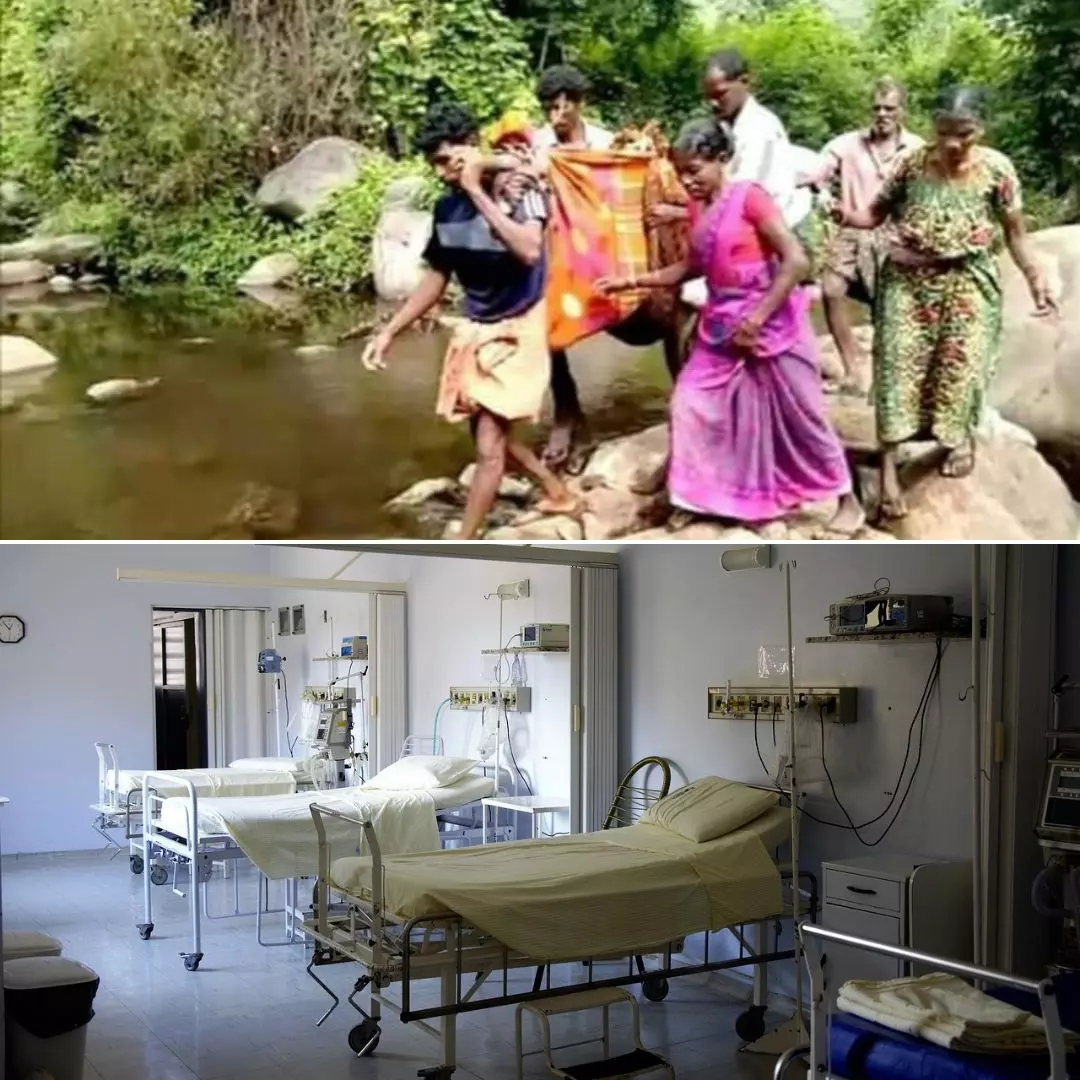Kerala: Pregnant Tribal Woman Carried On Makeshift Stretcher For 3.5 km Due To Lack Of Proper Roads
Writer: Laxmi Mohan Kumar
She is an aspiring journalist in the process of learning and unlearning many things. Always up for discussions on everything from popular culture to politics.
Kerala, 12 Dec 2022 10:03 AM GMT
Editor : Jayali Wavhal |
She writes about gender issues, human interest, and environment.
Creatives : Laxmi Mohan Kumar
She is an aspiring journalist in the process of learning and unlearning many things. Always up for discussions on everything from popular culture to politics.
The roads of the Attapadi tribal area in Kerala's Palakkad district have been in damaged conditions, and the only way the villagers could have taken the pregnant woman to the ambulance was through the makeshift resources available to them.
The infrastructural and connectivity limitations of tribal villages have once again made headlines with a recent incident reported from the Attapadi tribal area in Kerala's Palakkad district. Due to the lack of proper roads, a pregnant woman from the remote village had to be carried on a makeshift stretcher for more than three kilometres. The roads have been in damaged conditions, and the only way the villagers could have taken the mother to the ambulance was through the makeshift resources available to them.
Unexpected Medical Emergencies
The pregnant woman, identified as Sumathi Murukan, went into labour unexpectedly a week before her due date. At midnight, she was experiencing contractions and had to be taken to the hospital for her delivery. They called for an ambulance from the Kottathara Tribal Speciality Hospital, which is located at least 20 km from their village of Kadukumanna. However, upon the arrival of the ambulance, they had to park three-and-a-half kilometres away from Sumathi's residence due to the damaged conditions of the roads.
Sumathi's relatives were quick to react to the situation in hand and built a temporary stretcher out of cloth to carry her to the ambulance. Carrying her through the forest, the relatives were able to help her to the ambulance in time. According to a report by India Today, she was then taken to the tribal hospital, where Sumathi gave birth, and is currently in stable condition.
Infrastructural Woes Of Attappadi
Attappadi is a mountain valley nested below the Nilgiri Hills. In the year 1970, it was among the villages that were deemed the most backward block in the state by the State Planning Board. After this, the first integrated Tribal Development Project in the state was initiated and continues to date.
Multiple special development projects have been implemented in the villages since then, and it has been quite a challenge for the state to incorporate many of the modern projects into the traditional self-sustaining Adivasi culture and beliefs. This is one of the reasons why about 80 per cent of the tribal population continues to live in abject poverty, according to Wikipedia. In terms of infrastructure, the taluk has at least three government primary health centres (PHC), one community health centre (CHC), and 28 subcentres, but the access and connectivity to the same pose a question.
Also Read: '63% Of Pregnant Women In Rural India Work Until The Day Of Delivery': Survey
 All section
All section















